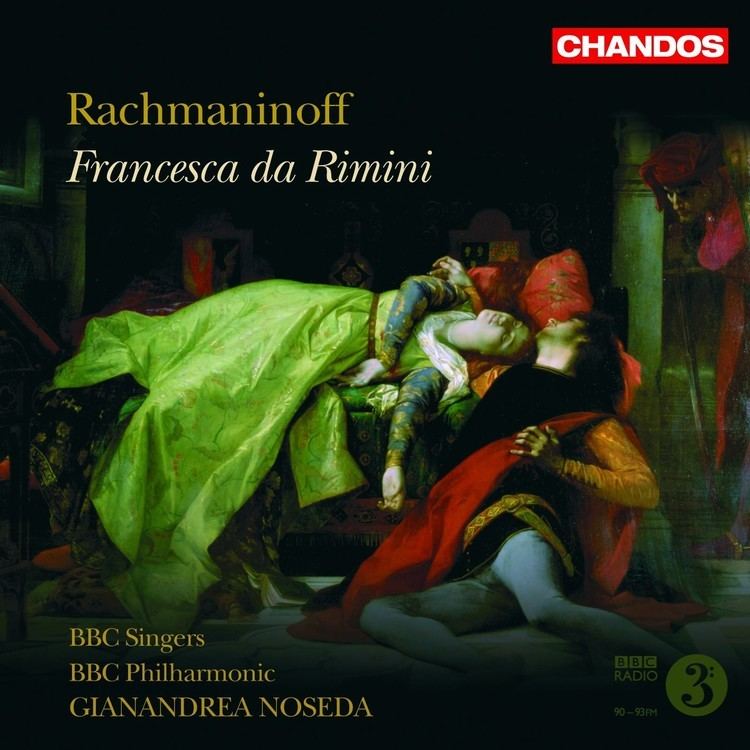Written 1905 | First performance 24 January 1906 | |
 | ||
Similar The Miserly Knight, Aleko, Monna Vanna, Iolanta, The Queen of Spades | ||
Rachmaninov francesca da rimini nancy 2015
Francesca da Rimini (Russian: Франческа да Римини), Op. 25, is an opera in a prologue, two tableaux and an epilogue by Sergei Rachmaninoff to a Russian libretto by Modest Ilyich Tchaikovsky. It is based on the story of Francesca da Rimini in the fifth canto of Dante's epic poem The Inferno (the first part of the Divine Comedy). The fifth canto is the part about the Second Circle of Hell (Lust). Rachmaninoff had composed the love duet for Francesca and Paolo in 1900, but did not resume work on the opera until 1904. The first performance was on 24 January (O.S. 11 January) 1906 at the Bolshoi Theatre, Moscow, with the composer himself conducting, in a double-bill performance with another Rachmaninoff opera written contemporaneously, The Miserly Knight.
Contents
- Rachmaninov francesca da rimini nancy 2015
- Rachmaninov francesca s aria from the opera francesca da rimini
- Synopsis
- Prologue
- Tableau 1
- Tableau 2
- Epilogue
- Recordings
- References
Rachmaninov francesca s aria from the opera francesca da rimini
Synopsis
The setting is the Malatesta castle around the end of the 13th century
Prologue
The ghost of Virgil leads the poet Dante to the edge of the first circle of the Inferno. They descend into the second, where the wordless chorus of the damned souls is heard. Virgil tells Dante that this is the realms where sinners given over to lust are punished, buffeted by an eternal whirlwind. Dante asks two such souls, Francesca and Paolo, to tell their story.
Tableau 1
In the castle courtyard, Lanceotto Malatesta is about to go off to war, but he admits that he no longer takes pleasure in war. Lanceotto is deformed, and knows that his wife, Francesca, does not love him. She had been tricked into marrying Lanceotto by being led to think that she would marry Paolo Malatesta, Lanceotto's handsome younger brother. Lanceotto is suspicious of Francesca and envious of Paolo. He plans to set a trap to catch them in adultery. Francesca then enters, affirming obedience to Lanceotto, but saying that she cannot love him. She asks when he will return, and Lanceotto says that he will not return until after the end of battle. When Francesca leaves, Lanceotto laughs.
Tableau 2
Paolo and Francesca are together, alone, in a room in the castle. Paolo tells the story of Sir Lancelot and Queen Guinevere, which parallels their own feelings. While doing so, Paolo declares his love for Francesca. Francesca resists initially, trying to remain faithful to Lanciotto. However, her own resistance erodes at Paolo's continued expressions of love, and her own desire for him. They sing of their secret love, and embrace. Lanciotto has returned, and sees the lovers together. He fatally stabs Paolo and Francesca.
Epilogue
Paolo and Francesca recede into the whirlwind of the second circle. Dante is overcome with pity and terror, and he and Virgil remain with the thought: ‘There is no greater sadness in the world than to remember a time of joy in a time of grief’.
